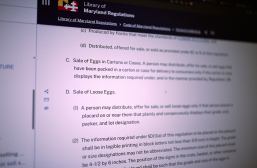Why open source is suddenly so important to state and local governments
 Open source software is enjoying a renaissance within governments. Much of this is due to the popularity of open data initiatives, but it goes beyond that. Governments are realizing that open source offers many more everyday benefits, including increased agility, innovation and collaboration. As such, state and local agencies are beginning to take full advantage of everything that open source has to offer.
Open source software is enjoying a renaissance within governments. Much of this is due to the popularity of open data initiatives, but it goes beyond that. Governments are realizing that open source offers many more everyday benefits, including increased agility, innovation and collaboration. As such, state and local agencies are beginning to take full advantage of everything that open source has to offer.
This is a change from recent policy, which often called for state and local governments to avoid using open source technologies. This was evidenced by a 2012 post, in which a technician with the state Department of Health and Human Services in North Carolina described his frustrations with restrictions on open source while outlining the benefits the software presented. In fact, assumptions can be drawn from several past misperceptions, all revolving around the idea that, somehow, open source was too open, making it vulnerable to any number of issues.
It turns out this individual was very prescient, as two years later we are seeing many state and local organizations not only authorize open source software but fully embrace it. New York City, the city of Los Angeles, Oakland County, California, the state of Georgia and others are now using open source solutions to bring things like realtime street maps, subway activity and more to users.
Municipalities like these typically use a wide variety of tools within their IT departments to manage the sheer amount of information that must be stored and shared, and open source is ideal for this type of heterogeneous environment. By its very nature, open source software can work with any type of installation or equipment, regardless of how varied or disparate it might be. State and local agencies do not have to discard their legacy systems to take advantage of open source, because open source — being more flexible, scalable and powerful than “closed” or “walled garden” systems — is not limiting, and easily works with them. In short, open source software can be customized and adapted to meet the data management needs of just about any organization.
This flexibility has been made possible through the efforts of the open source community, which is comprised of some of the most passionate developers in the world. Their dedication has led to the near constant creation of agile, innovative solutions and faster development cycles. This rapid development helps state and local governments continually address ever-evolving needs and remain at the cutting edge.
Open source developers are also vigilant about tracking down potential security issues. These developers — many of whom are security experts — regularly engage in peer reviews and vulnerability scanning and are quick to react to potential threats. Updates are regularly tested and issued, and information on known issues is shared and easily accessible. It’s like having a global security team on 24/7 alert.
All of these are reasons why agencies are now more likely to embrace open technologies than shun them. It’s a change of attitude resulting from need and opportunity. The need is to better manage data; the opportunity is to become more agile and innovative while doing so. That’s a powerful combination for state and local IT.
Todd Akers is the vice president of public sector at Acquia and a recognized expert on open source technology.






